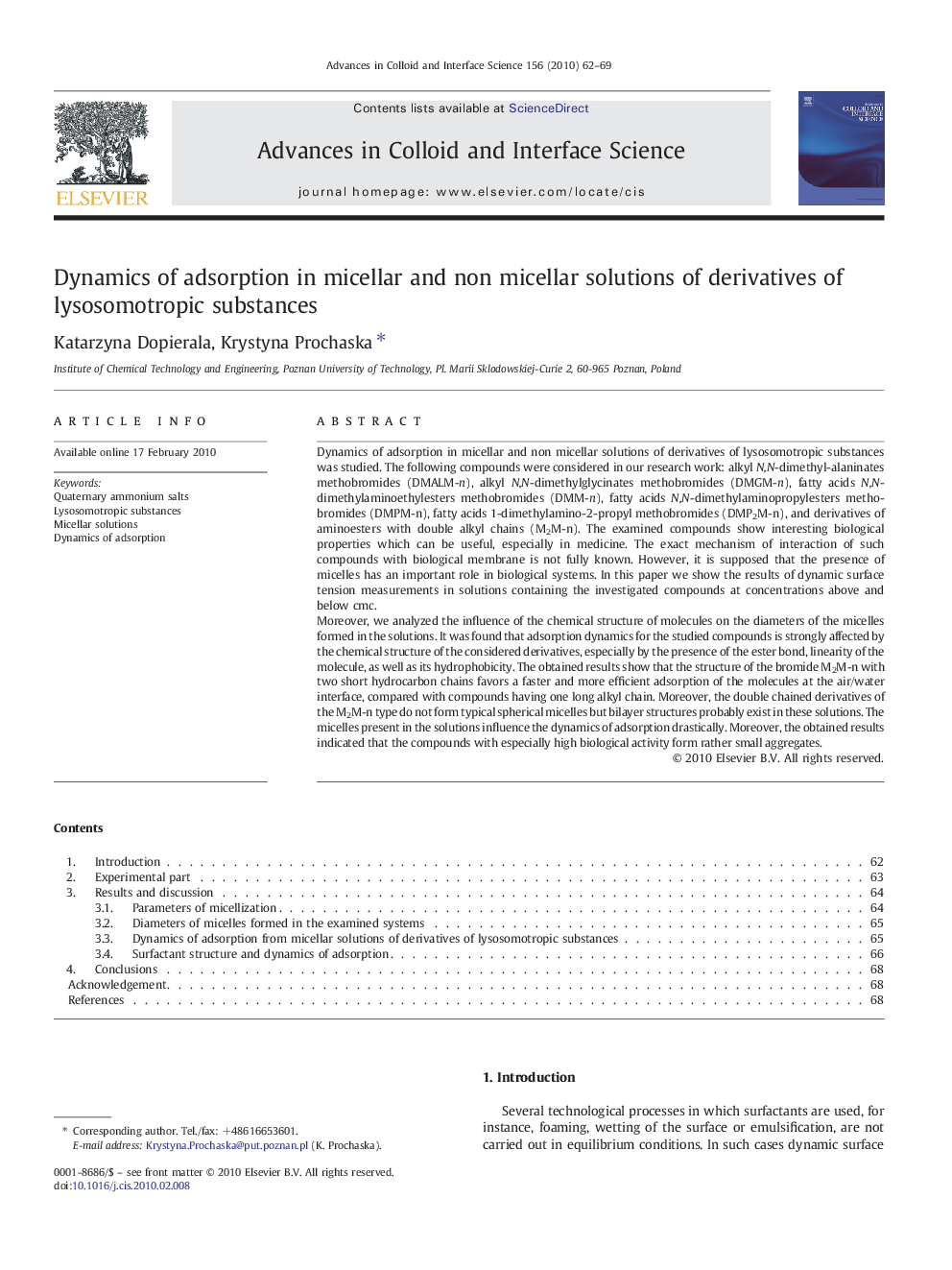| Article ID | Journal | Published Year | Pages | File Type |
|---|---|---|---|---|
| 591059 | Advances in Colloid and Interface Science | 2010 | 8 Pages |
Dynamics of adsorption in micellar and non micellar solutions of derivatives of lysosomotropic substances was studied. The following compounds were considered in our research work: alkyl N,N-dimethyl-alaninates methobromides (DMALM-n), alkyl N,N-dimethylglycinates methobromides (DMGM-n), fatty acids N,N-dimethylaminoethylesters methobromides (DMM-n), fatty acids N,N-dimethylaminopropylesters methobromides (DMPM-n), fatty acids 1-dimethylamino-2-propyl methobromides (DMP2M-n), and derivatives of aminoesters with double alkyl chains (M2M-n). The examined compounds show interesting biological properties which can be useful, especially in medicine. The exact mechanism of interaction of such compounds with biological membrane is not fully known. However, it is supposed that the presence of micelles has an important role in biological systems. In this paper we show the results of dynamic surface tension measurements in solutions containing the investigated compounds at concentrations above and below cmc.Moreover, we analyzed the influence of the chemical structure of molecules on the diameters of the micelles formed in the solutions. It was found that adsorption dynamics for the studied compounds is strongly affected by the chemical structure of the considered derivatives, especially by the presence of the ester bond, linearity of the molecule, as well as its hydrophobicity. The obtained results show that the structure of the bromide M2M-n with two short hydrocarbon chains favors a faster and more efficient adsorption of the molecules at the air/water interface, compared with compounds having one long alkyl chain. Moreover, the double chained derivatives of the M2M-n type do not form typical spherical micelles but bilayer structures probably exist in these solutions. The micelles present in the solutions influence the dynamics of adsorption drastically. Moreover, the obtained results indicated that the compounds with especially high biological activity form rather small aggregates.
